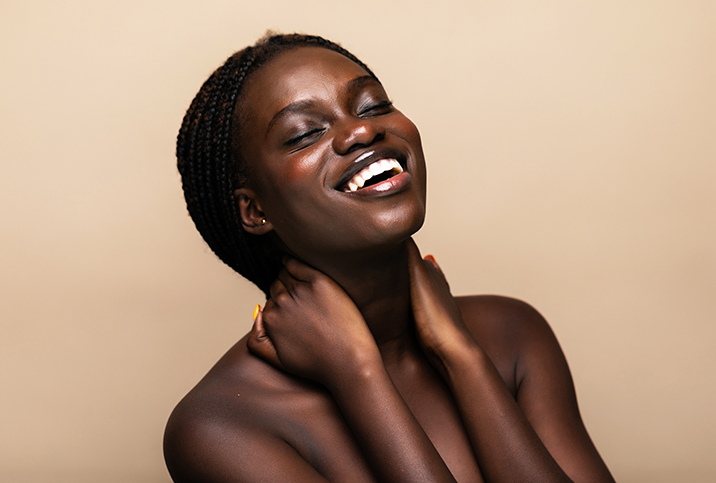Separate Dry-Brushing Myth From Fact

In the quest for vibrant skin, dry brushing may be the oldest "new" trend. The practice and its predecessors can be traced back to the earliest Ayurvedic texts, the ancient Egyptians, Romans and Greeks, and traditional Chinese medicine.
Defined as a body massage with a dry, stiff brush, the practice has been credited with a wide variety of benefits ranging from exfoliating the skin and reducing cellulite and the size of pores to improving circulation, lymphatic flow and digestion. By medical standards, some of the claims are truer than others, while some are not true at all.
The American Academy of Dermatology makes no mention of dry brushing on its website and provides other recommendations for exfoliating at home. Many dermatologists find it unnecessary. Others, while not recognizing any value, see no harm in it for people with healthy, uncompromised skin.
While most dermatologists recommend different methods for it, the most accurate claim of dry brushing is exfoliation. The abrasive nature of the brush, and the motion and pressure applied, does an effective job of loosening dead and flaking skin cells to reveal the newer, more healthy skin below—for those of us in our 30s or older. People younger than 30 generally don't need to exfoliate because the skin's top layer needs no help in restoring itself. Ah, youth!
Dry brushing should only be performed on healthy, uncompromised skin. If you have sensitive skin, cystic acne, cellulitis, skin cancer or scaling skin conditions such as psoriasis or eczema, it's best to opt for less aggressive forms of skin care. Similarly, avoid brushing areas with scrapes, sores, burnt skin, moles, warts or raised bumps. The same goes for skin infections such as athlete's foot.
Easy-does-it is the way to go when it comes to dry brushing, as too vigorous or prolonged action may cause fine breaks or tears in the skin, which could be subject to infection. Choose a natural bristle brush and begin at the feet or ankles and work your way upward using either sweeping or circular strokes and light-to-moderate pressure. Move to the arms, progressing from fingertips to shoulders, before brushing the body.
The upward and inward motion is intended to improve blood and lymphatic circulation. It temporarily plumps the skin, giving it a smoother appearance, which might account for the assertion that dry brushing reduces cellulite, though it doesn't.
The process does clear debris from the pores, causing them to appear smaller. Any detoxification dry brushing initiates is from improved circulation in the skin—from there, the job of detoxifying the body is taken over by the liver, kidneys and colon.
The best time to dry brush is just before your bath or shower so you can rinse away the loosened skin cells using warm (not hot) water. Be sure to apply a mild body lotion afterward. Like many of its purported benefits, the frequency at which dry brushing should be performed is a matter of debate, with everything from daily to once a week recommended by varying sources. If you are going to try it, it's best to start slowly and see how your skin responds.
Again, resist any urge to use vigorous motions or intense pressure. It's your skin we're talking about, not the pot of tomato sauce you forgot on the stove. Most important, if even the lightest pressure is uncomfortable, stop and switch to a washcloth—they do a fairly good job of exfoliating, too. The goal is to improve the appearance of your skin and leave you feeling invigorated the way a massage does. If dry brushing gets the job done, add it to your routine. If not, scrub it.
















